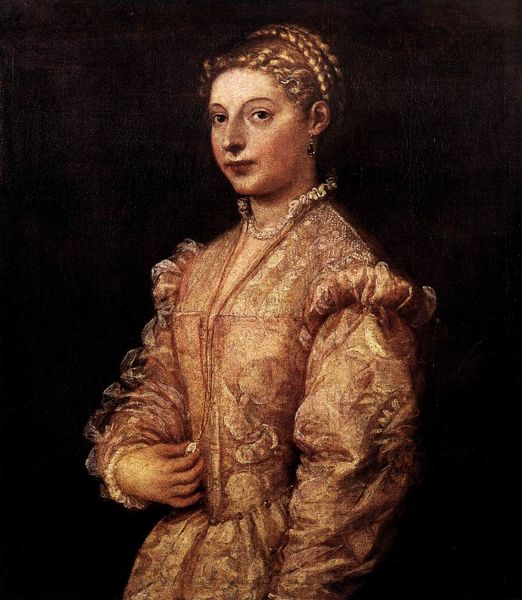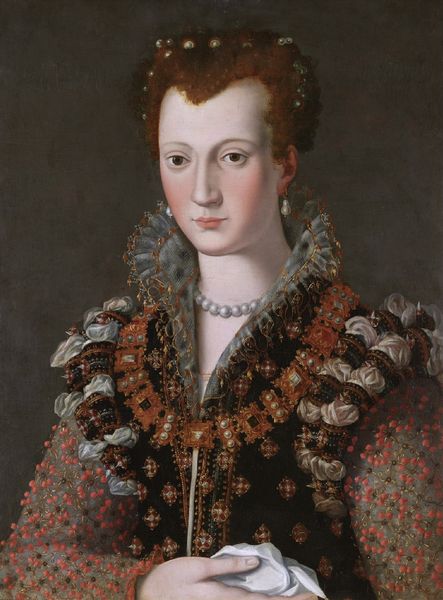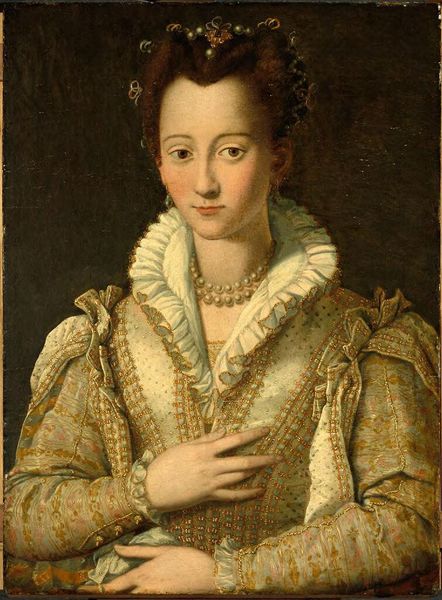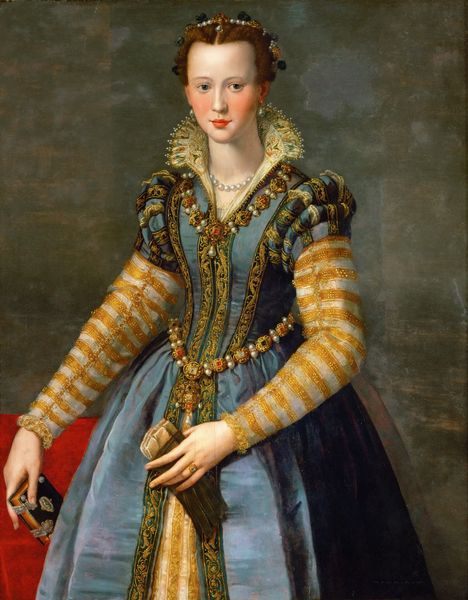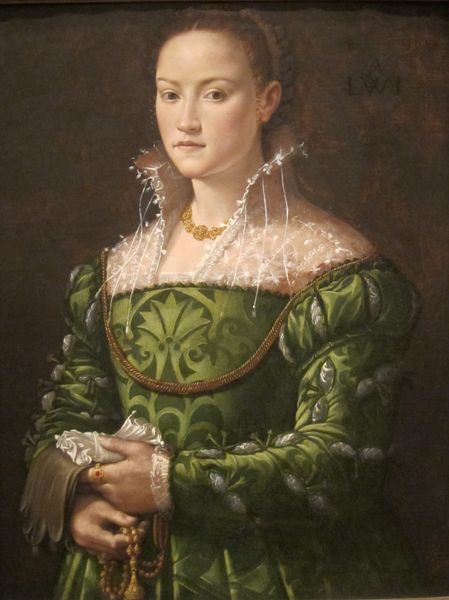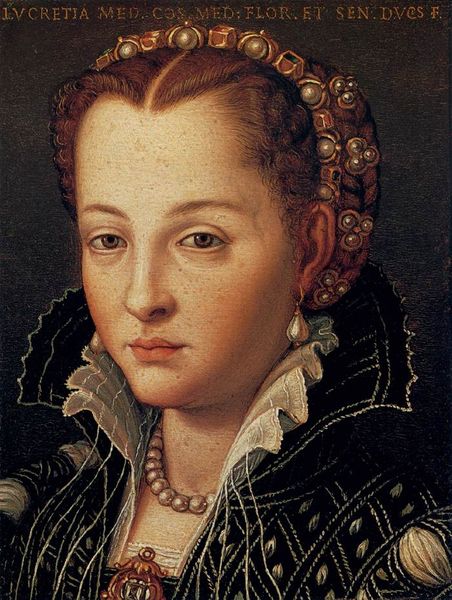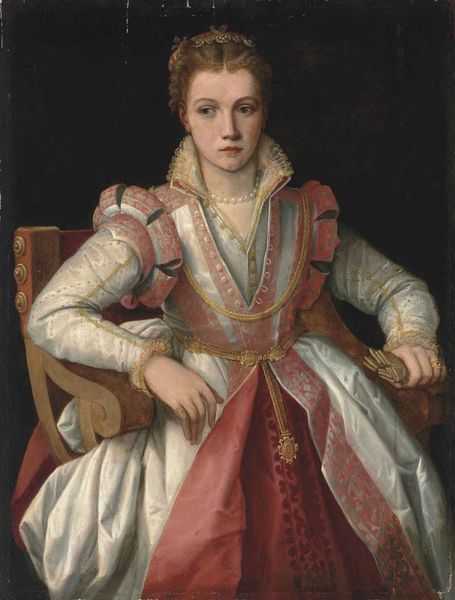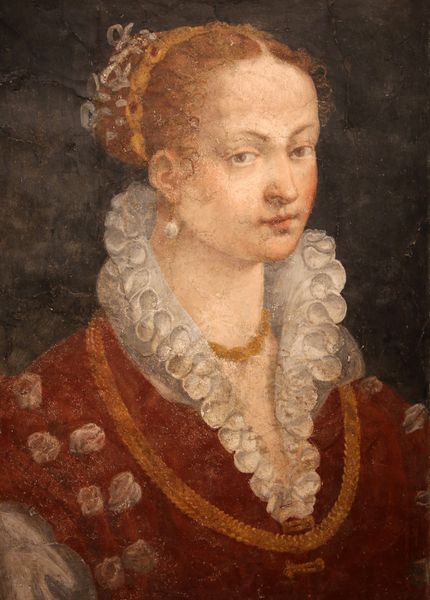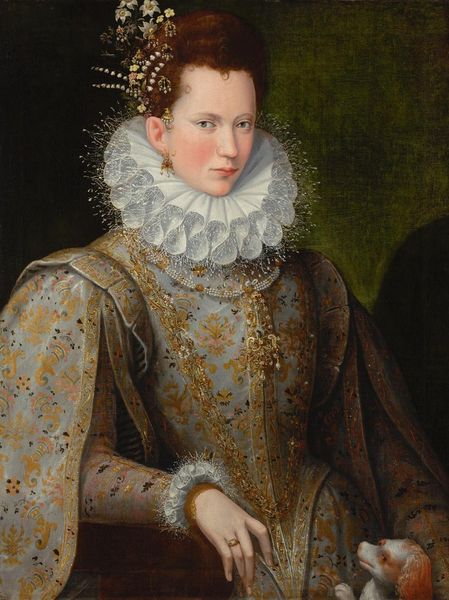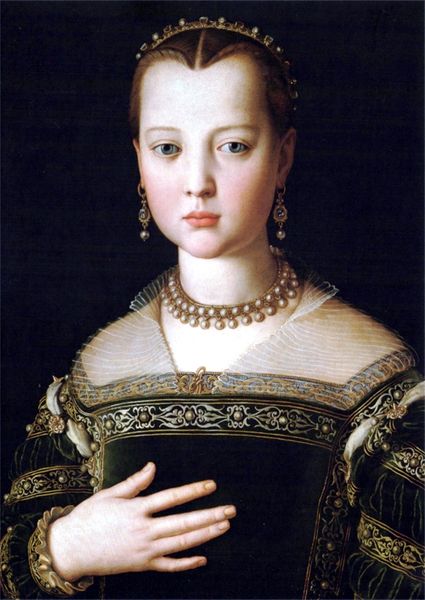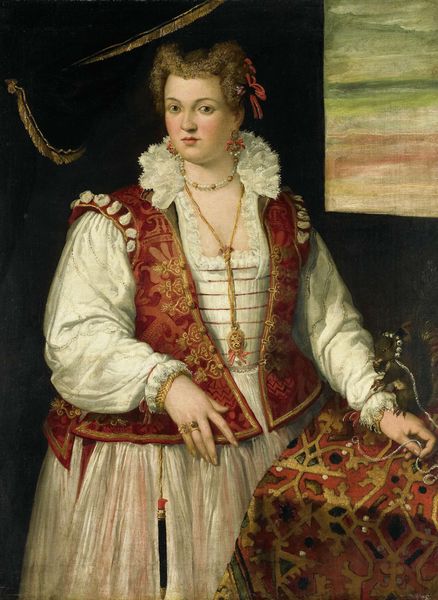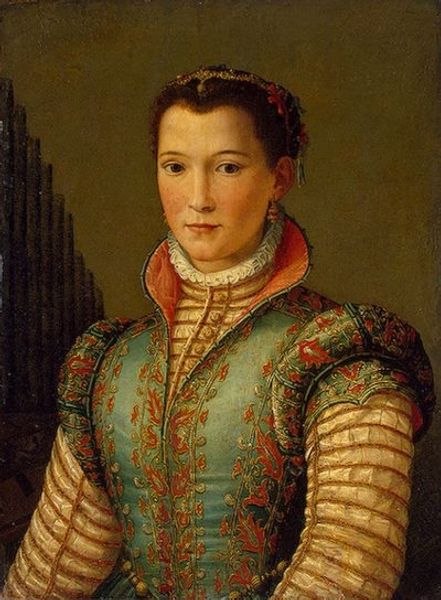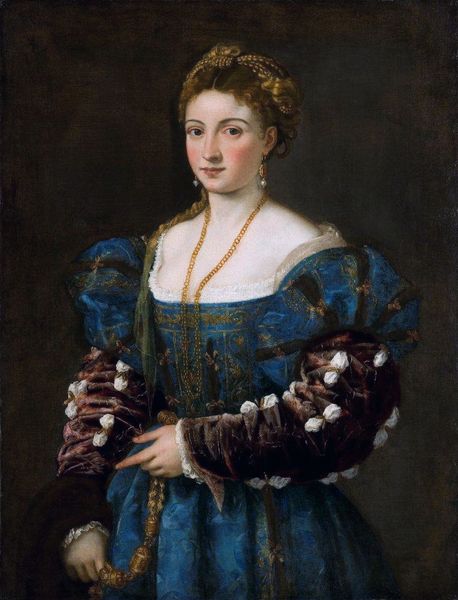
Portrait of a young woman, possibly Countess Gozzadini 1530
0:00
0:00
painting, oil-paint
#
portrait
#
painting
#
oil-paint
#
mannerism
#
figuration
#
history-painting
#
academic-art
#
italian-renaissance
#
female-portraits
Dimensions: 50 x 46.4 cm
Copyright: Public domain
Parmigianino painted this oil on panel portrait of a young woman in Italy during the early 16th century. The painting's visual codes point towards a specific moment in cultural and institutional history. The elaborate turban-like headdress and luxurious gown suggest the sitter's aristocratic status. During the Renaissance, portraits functioned as powerful statements of identity and social position. Commissioned primarily by elites, portraits reinforced hierarchical social structures. The young woman’s direct gaze conveys both confidence and a sense of self-awareness fitting of a noblewoman. Parmigianino’s elegant style, with its emphasis on grace and refinement, catered to the tastes of a sophisticated courtly audience. His art reflects the humanist culture that valued individual achievement and the cultivation of beauty. To understand this work more fully, we can consult archival records, costume histories, and studies of patronage networks. These resources shed light on the complex social conditions that shaped artistic production in Renaissance Italy. By situating art within its historical context, we recognize its role in reflecting and reinforcing cultural values.
Comments
No comments
Be the first to comment and join the conversation on the ultimate creative platform.
